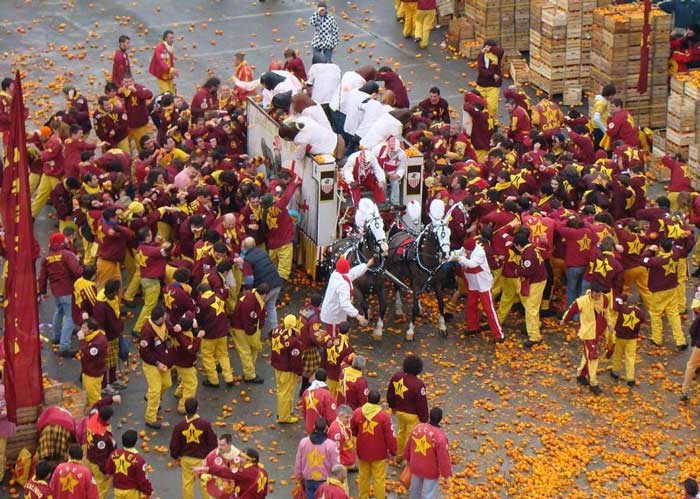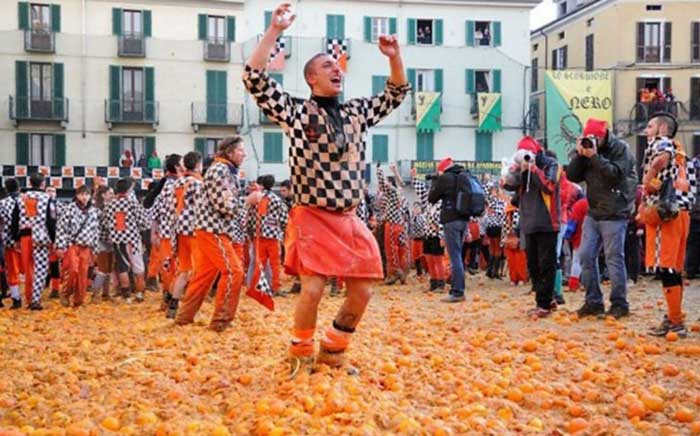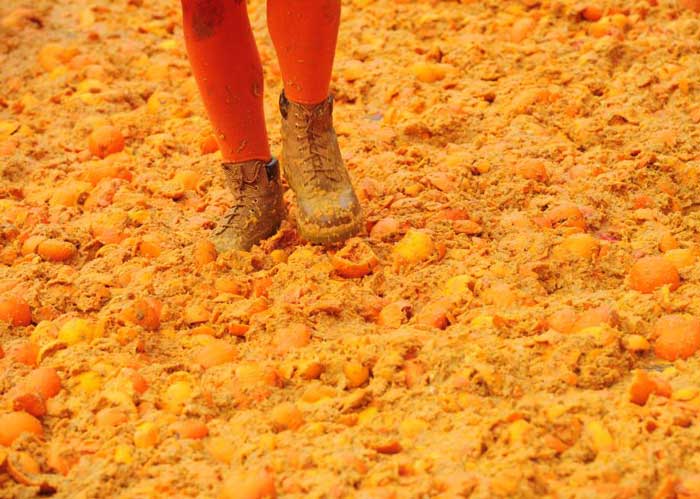
Established in 1808, the Carnival of Ivrea, in the Northern Italian city of Ivrea, is one of the oldest and most particular festivals in the world. The Battle of the Oranges is a part of the Carnival of Ivrea, which includes a tradition of throwing of oranges between organized groups. However, the origin of this popular festival is somewhat dusky and according to a popular account, it commemorates the protest, defiance and resistance of the city against the city's tyrant, who was probably the local vile tyrant Marquis Raineri di Biandrate. It is said that the tyrant visited a young woman named Violetta on the eve of her wedding and attempted to rape her, exercising his droit du seigneur, which was supposed to be the legal or customary right of a feudal lord to have sexual relations with a commoner’s bride on the wedding night. But Violetta fought back and chopped off the head of the tyrant with her sword or dagger. The incident incited the commoners, unleashed their pent up anger, as they stormed the castle, burned and razed it to the ground, and vowed to never submit to tyranny again.


Every year the citizens of Ivrea remember their liberation with the Battle of the Oranges that involves some thousands of the townspeople. Subsequently, during the 19th-century French occupation of Italy, the Carnival of Ivrea was modified to add the representatives of the French army. Each year in February, in the days preceding Fat Tuesday, the people of Ivrea divide up into nine combat teams, each with its own distinctive uniform. Equipped with enough supply of crates of oranges, the teams stand and wait in the main square for the arrival of the enemy in the carts and as soon as they arrive, the fruits start to fly. The origin of the tradition of throwing oranges is actually not very clear, particularly as oranges do not grow in the foothills of the Italian Alps and must be imported from Sicily. It was estimated that in 1994, about 265,000 kilograms of oranges were brought to the city for the purpose, which were mainly the leftovers of the winter crop in southern Italy.


Traditionally, a young girl is chosen every year to play the role of Violetta, the defiant young woman. The combating parties consist of the ‘aranceri’, the orange throwers on foot, representing the commoners and the ‘aranceri’, in carts representing the duke's army. The oranges, representing old weapons and stones are thrown with considerable violence to the ‘aranceri’, who are duly protected with head gears. But, the commoners on the street squads are without any such privilege. It is, therefore, a common sight, to see people stumbling out of the square with orange-induced injuries, such as black eyes, cuts, and the sting of citric acid in a wound.

Over the course of the next three days men, women and children of Ivrea hurl oranges at each other, attempting to “kill” the members of the other team and after the three days of carnage, one of the generals of the teams declare the end of the war. The gala event is followed by a massive funeral on Fat Tuesday. The traditional procession through the streets of Ivrea includes floats, folk dance and folk musical groups which fill the city with fantastic colours and perfumes. The oldest rituals of Ivrea Carnival include a large bonfire and are similar to the ancient celebrations linked to the end of winter and the rise of the new spring.
